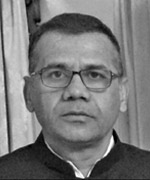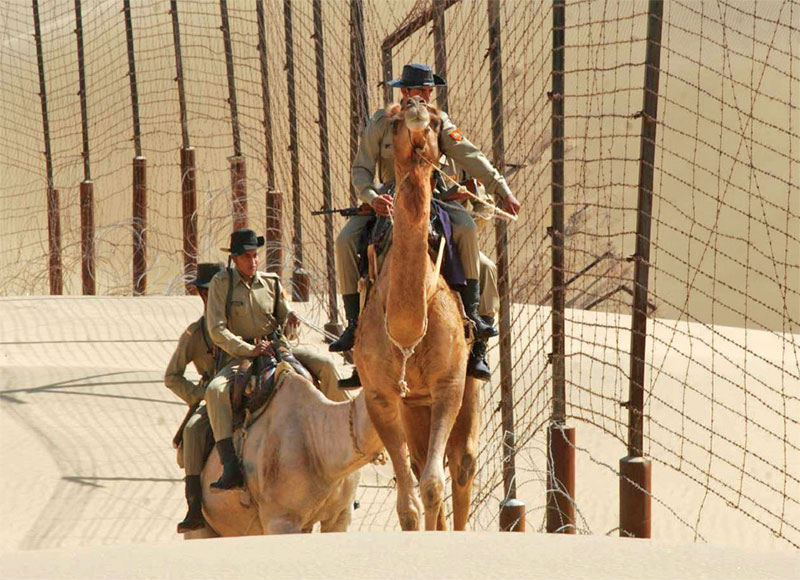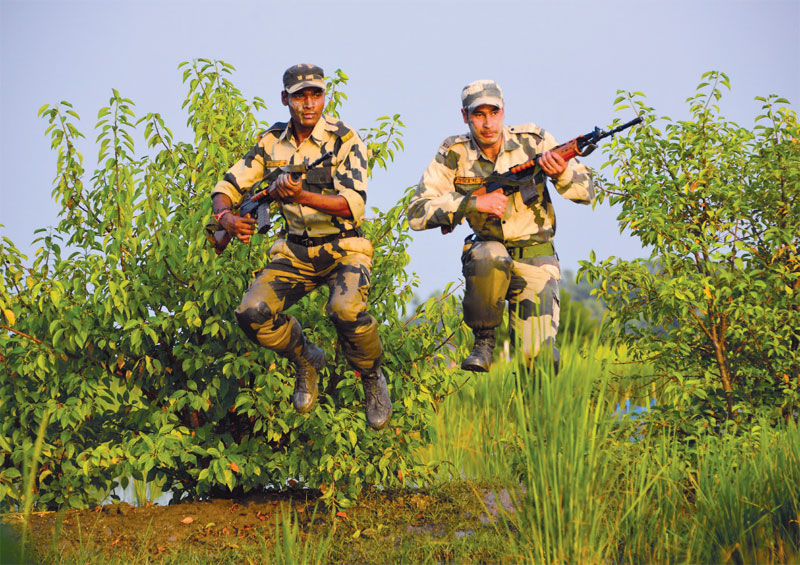CAPFs need to be downsized and their training and equipment should be compatible with infantry
 R.C. Sharma
R.C. Sharma
Unsettled borders are conflict prone and pose a serious national security challenge. They are disputed territories, which require round the clock domination. Forces tasked with the defence of unsettled borders have to be professionally strong to repulse any misadventure and surprise action by the enemy. Writing in The Print concerning the lead role of the Indo-Tibetan Border Police along the Line of Actual Control (LAC), Lt Gen. H.S. Panag (retd) said “at unsettled borders, a guarding force has to be enmeshed with the armed forces and act as the first line of defence.”
In the Indian context, the Line of Control (LC) and the LAC are unsettled borders and have been in a continuous state of conflict. Both Pakistan and China lay claims to large swathes of Indian land under their illegal occupation contiguous to the unsettled borders. The Chinese belligerence in the recent past has assumed new dimensions in destabilisation and hostility, rendering the 1993 and 1996 agreements on peace and tranquillity on the LAC unilaterally inoperable. The Chinese actions thus make the LAC highly sensitive, unstable and conflict-prone.
Lead Role
Amidst the instability and tension along the LAC emerged media reports that claimed that the ministry of home (MHA) was considering a proposal to designate the ITBP as the lead agency on the LAC. The purpose of giving the lead role to the ITBP was apparently to avoid future conflicts between the Indian Army and the People’s Liberation Army (PLA). The move led to debate among military veterans as the proposal was unprecedented considering the Chinese hegemonic intentions and the nature of threat.
Reacting to the reported proposal, former army chief Gen. V.P. Malik (retd) tweeted: “An illogical, dumb idea. When adversary looks to surprise us on LAC, We want to place Army behind ITBP in second tier. First tier controlled by MHA and second by MOD! Have we forgotten how two years ago PLA was diverted from exercise deployment to intrude across LAC?”
The important question is whether the ITBP will be able to avert hostile action from the PLA. Does the ITBP possess professional capabilities to replace the army in the first tier? Will it be possible for the army to react in time to avert hostile action by the PLA from the second tier? If the ITBP is given the lead role on the LAC, pushing the army to a secondary role, the Border Security Force (BSF) may demand that it be designated as the lead agency on the LC. On unsettled borders, the army needs to be kept in the lead role with border guarding central armed police forces (CAPFs) under its operational control. Those who proposed the lead role for the ITBP seem more concerned about cooling tempers than the long-term security implications. China must be watching the move gleefully as it fits its agenda. The move in all likelihood will invite extreme belligerence and hostility from China if the proposal is implemented.

Integrate CAPFs
Veterans expressed concern over the reported government move and called for reforms to integrate the CAPFs in the overall security apparatus. But they were ambivalent as far as giving up the counter-insurgency role was concerned. The army needs to focus on its main role of guarding the border against the country’s enemies, leaving counter-insurgency operations to the CAPFs and the police.
In an article titled ‘Need Theatrisation, not lead agency on China border,’ former western army commander Lt Gen. K.J. Singh (retd) said: “The aim of relieving the army from a secondary role is indeed laudable but it has to begin with the CRPF and the police getting empowered to tackle counter insurgency operations in the valley. It is also logical to enhance the role, responsibility and more importantly accountability of the ITBP on the LAC. They will require to be trained and reorganised. The foremost requirement is that the CAPFs, including the AR, should have integral cadres and cease para-dropping of apex IPS leadership, which has been recommended by multiple parliamentary committees. Finally, the way forward is integration under a single integrated theatre with full operational and functional control.”
Writing in The Print, Lt Gen. Panag (retd) said: “At present with respect to the unsettled India-China border, the armed forces and the ITBP function independently in virtual silos under the MoD and the MHA.” He further said: “Our large border guarding force is a nation security asset. In conflict/war, it must operate in a seamless and cohesive manner with the armed forces. It must be organised, equipped and trained to carry out its dual role. Along the unsettled borders, it must function under the armed forces and along settled borders, it must come under their command in war. The deployment of border guarding forces under the command of the army in conflict/war is already codified in the union war book, but synergy is not up to the desired standards due to structure, organisation, equipment and ambiguous command and control. There is a need for holistic reforms.”
Reform border guards
Border guarding forces have a dual border management and wartime role. Keeping border guarding forces under the army’s operational control along the unsettled borders is a national security necessity. The MHA and the border guarding forces need to be pragmatic and accept that border guarding forces lack professional strength and structure for a lead role in the unsettled borders. They need reforms to acquire the professional strength of the military in order to augment and strengthen national security. Training and equipment compatibility with the army as well as command and control at the apex level are important issues.

The existing organisational structure of the border guarding CAPFs seems suitable for peacetime core and non-core functions but it is certainly not ideally suited for fighting a war because of various deficiencies integral in their structure. There is a need for reforms in the structure, organisation, arming and equipment policy to make the border guarding forces professionally sharp and responsive both during war and peace.
For undertaking the reforms in the border guarding CAPFs there is a need to analyse and study the structure of the Chinese border defence troops, Pakistan’s Rangers and Border Guards Bangladesh. In his article ‘Securing Borders: China’s Doctrine and Force Structure for frontier Defence,’ M Taylor Fravel of MIT explains that “under a ‘division of labour defence management’ system, the PLA is responsible primarily for external defence and the security of China’s borders. Two different types of PLA units are tasked with defending China’s borders. The responsibility for securing the ‘first line of the border’ lies with the PLA’s border defence troops. Border defence units fall under the command of the provincial level military district.” It clearly means that border defence units form part of the military and function under the control of the PLA.
Similarly, Pakistan’s Rangers is organised into a wing consisting of four service companies and a reserve company with an approximate strength of about 800 personnel. Similarly, the Border Guards Bangladesh battalion has five service companies and a strength of about 800 personnel.
Bloated Battalions
The government initiated military reforms considering the emerging security challenges and the ever-changing security dynamics in the region. The aim was to usher in jointness. The border guarding forces form part of the overall security apparatus of the nation and need organisational reforms. National security interest and the genuine concerns of military veterans necessitate real, time-bound reforms in the structure, organisation and equipment of border guarding forces. The reforms are particularly acute at the fighting unit level, or the battalion, so that there is better synergy with the army during war.
The battalion structure and organisation of all border guarding forces is similar with minor variations. The battalion structure is bloated with integral deficiencies, they need to be lean. At present a battalion with a border guarding force is about one-and-a-half or two times the size of an infantry battalion. It needs trimming for better command, control and synergy. The following structural reforms are desirable.
- There is a need to trim the battalion size from the current unmanageable levels to more manageable ones for better command and control, functional ease and efficiency. There is a need to have additional officers at the sub-unit level for functional ease, continuity and flexibility to the make sub-unit operationally better responsive and energised. Additional battalions need to be raised by trimming the current organisational structure. Abolish the rank of assistant sub-inspector, restore the old system of head constable section commander for synergy and compatibility in war and maintain a young age profile. There is also a need to restore the rank of Lance Naik and Naik for better promotional avenues.
- Restructure support companies for functional ease in both defensive and offensive role and consider enhancing authorisation of weaponry in support role.
- The enhanced retirement age has created a large pool of personnel in the higher age group of 50-60 years in the CAPFs. Difficult service conditions and counter insurgency duties make it physically and mentally taxing for men in the higher age group, affecting individual performance and organisational effectiveness. The arduous and harsh service conditions also affect the physical and mental health of men, creating large pool of low medical category personnel with restrictions placed on their employability. This means a large strength is under performing because of factors beyond the organisation’s control. This reduces the strength available for core and non-core functions. To maintain a young age profile, there is a need to bring down the retirement age of border guarding forces and the CAPFs to an acceptable limit. Reducing the age of a battalion commander to 40-45 years will bring better effectiveness and efficiency. It is achievable with a proper planned promotional regime for officers.
- There is a need to rethink the combat role of women for border guarding, war and counter insurgency. Women may not be fit for war and counter insurgency but have a role in border guarding. Instead of making women part of the authorised strength of a battalion, raise one mahila battalion per frontier and attach women constables from this battalion with border-deployed units on a need basis. This will not deplete the combat strength and help in reducing stress among male constables emanating from increased workload. Women constables can be shifted to the state police after five years of service or their service capped at five years with a handsome severance package.
- Do away with deputation from the police in the interest of professionalism. Deputationists with police training do not have professional orientation for border guarding and war.
- There is a need for major human resource reforms for men and officers in the border guarding forces to improve promotional avenues. A constable picks up rank after about 22 years of service while officers of the 1997 batch are still second in command despite putting in 26 years. Implement a time-bound promotional system by selection through promotional examinations for the officer cadre. This will automatically help in bringing down the age of command to 40-45 years.
Arming/ Equipment Policy
The arming/ equipment policy of the border guarding CAPFs needs to be prepared in consultation with the army and the MoD and not in isolation by the MHA/ CAPFs. This is required to build common capabilities. They need to be armed with weapons on a par with and compatible to infantry battalion weapons. They need personal weapons that are lightweight with high accuracy and volume of fire. They must be easy to operate with minimum glitches/ stoppages for better mobility and manoeuvrability. The equipment too has to be suitable and compatible. Incompatible and unsuitable equipment reduces efficiency, stretches the logistics chain for repair and maintenance, puts stress on maintenance infrastructure and degrades war efficiency. As the border guarding forces have a defined primary and secondary role, they need weapons and equipment suitable for both the roles.
There must be uniformity in small arms across all border-guarding forces and the army. This will improve efficiency, reduce costs and common training can be organised leading to better synergy and coordination. There is also a need for joint audit every two years with the army concerning arming policy and equipment inventory to ascertain compatibility of arms and equipment. This audit will also serve the purpose of knowing the deficiencies in terms of weapons and equipment and the need for any specialised weapons for war time role.
Training Personnel
‘We don’t rise to the level of our expectations, we fall to the level of our training’, said Greek poet and warrior Archilochus. Training is very important to make soldier a warrior. There is an urgent need to reform and restructure the training regimen of border guarding forces for organisational effectiveness. Training is the only tool available for capability building to prepare men and organisation for designated roles. Training is irregular because of a multiplicity of commitments.
In the seventies and early eighties, BSF companies used to take part in exercises with the army. The army authorities need to draw a schedule for war role training of border guarding forces. Without coordinated peacetime training, the war effort is degraded. All men need to be put through specific training to keep them fit and active. Similarly, peacetime individual and collective training has to be practical, regular and must culminate in exercises for testing the efficacy of the training. For making training realistic for peace and wartime roles here are a few suggestions.
- Make yearly training mandatory. War training should be with affiliated army units and it should only be for personnel below 50 years of age. Officers must take part in such training, which is not the case at present because of various reasons/factors. The higher headquarters must integrate themselves in training to identify the problems areas.
- Carry out a feasibility of battalion-level training every alternate year and battalion training should culminate in exercises.
- Carry out a joint audit of wartime training every two years to remove deficiencies, improve quality and coordination for better functional effectiveness on the ground.
- Motivational and morale boosting training must be made mandatory by revisiting the force’s history and achievements.
Major Stakeholder
Reforms in the border guarding forces have to be effected to restore the structure envisaged by parliament at the time of their raising. Former home minister Y.B. Chavan, who piloted the draft bill of the Border Security Force Act on 23 July 1968, said: “The efficiency and discipline that is expected of this force is equal to that of the army and we will have to compare this structure of punishment with that of the armed forces. We expect a special standard of discipline and efficiency and the task that is given to this force is equal to that of any army.” He further said: “Naturally the requirement of such a force is of a special type and we had to take a different type of organisation, a different type of training and we have to give weaponry to this force which is as good as that of the infantry.”
Border guarding forces are major stakeholders in national security. They have mandated peacetime and wartime roles. Unless reforms and restructuring are undertaken, the border-guarding forces may face difficulties in fulfilling their role. In the words of Chavan, “the character of a force is decided by the tasks that it is supposed to perform.” About the BSF, he said “it is not a police force because it is not doing the police duty as we understand it and it is not an army because it is not doing the army’s job. They will be the first line of defence in a sense. The first impact of any aggression and the first brunt will have to be borne by the BSF.”
In order to make the character of border guarding forces task-oriented, there is a need to remove the anomalies and deficiencies from the existing structure. The government needs to realise that border guarding forces will face the first brunt of aggression. They need to meet the dynamic security challenges.

